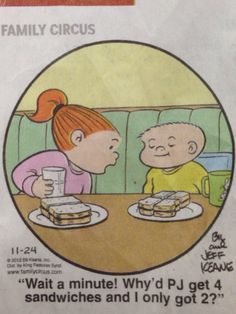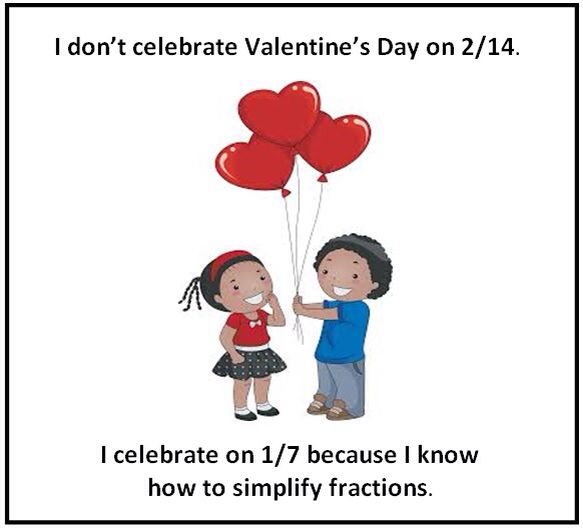- I've made up a key out
of your classmates work (hopefully your work, too!).
- You have a homework due today! Please get that submitted to Canvas.
- Materials for today:
- Here is a video covering today's topic of Egyptian division. Here's the pdf containing the work that was done during the video.
- the Fibonaccis, embedded in Pascal's Triangle (Fibonaccis lurk within Pascal's triangle).
- We also examined how we can put Pascal's triangle to use, in counting the number of possible Facebooks..
- Finally, we jumped into Egyptian multiplication, which relied on two things: the Egyptian's ability to double, and the unique factorization of a counting number as a sum of powers of 2.
- We started last time with some simple examples, and we should do a warmup:
what's 223*67
1 223 2 4 8 16 32 64 128 Too big! On the left we build the "missing part" of the product -- 67 -- and on the right we build up our answer, using the corresponding doubles of 223.
Remember that they would frequently start with the larger, to reduce the number of doublings.
- Now: multiplication's not too bad. How about Egyptian division?
- I've given you a reading to do for homework:
- Take a look at your reading,
p. 13: you'll see how Egyptians wrote their
numbers. (Notice the blocking; also that they're base
10 people.)
- Then, at the end of your reading, how they wrote fractions.
- Take a look at your reading,
p. 13: you'll see how Egyptians wrote their
numbers. (Notice the blocking; also that they're base
10 people.)
-
We can think of division as just using the multiplication table
"backwards". So if we write the quotient (which is what we're
looking for) as
dividend/divisor = quotient We can think of this as a product instead:
divisor*quotient = dividend For the product we'd take one of the parts of the product (the divisor, say), and double it on the right. Making up the quotient with numbers on the left, we'd then find the dividend by adding up the corresponding numbers on the right.
In the division problem we know the dividend, so we reverse the process: we find numbers on the right that sum to the dividend, and then add up the corresponding numbers on the left to give the quotient, which is what we're after.
Example: Let's try this one from last time (we'll just reverse the problem, to show how we're using the table backwards -- 23*42).
1 23 2 4 8 16 32 64 Too big! - Let's look at the simplest example imaginable: divide 32
by 8. We can actually do it by Egyptian multiplication,
since 8 divides into 32 evenly:
1 8 2 16 4 32 * So the answer is 4 (how do we get 4?)
- Similarly we could divide 40 by 8, using the same
table (again easy, since 8 divides into 40 evenly):
1 8 * 2 16 4 32 * So the answer is 5 (how do we get 5?)
- Now: what happens when the division doesn't work out quite so
nicely? We get "the f-word": fractions!
- When the denominator doesn't divide the numerator
evenly, fractions make it more interesting (my word --
you might use a different word!:).
Let's look at an example: divide 35 by 8.
In a way we turn it into a multiplication problem: what times 8 equals 35? So we know the 8, and use it to "double" -- but then to "halve", when 8 won't go evenly into 35:
1 8 2 16 4 32 * 1/2 4 1/4 2 * 1/8 1 * So the answer is 4+1/4+1/8
- the Egyptians restricted
themselves to the so-called "unit fractions", which are
fractions of the form 1/m:
unit
fraction table, which is found on the Rhind
Papyrus (which dates to around 1650 BCE).
But they didn't restrict themselves to "halving", as our next example shows. Divide 6 by 7:
1 7 1/2 3+1/2 * 1/4 1+1/2+1/4 * 1/7 1 1/14 1/2 * 1/28 1/4 * So the answer is 1/2+1/4+1/14+1/28 (we usually order them from largest to smallest).
Notice that the Egyptians didn't use decimals -- you shouldn't either!
Why did Egyptians do things this way? (an example division problem, 3/5)
Dominic Olivastro, "Ancient Puzzles", suggests a third reason why this use of unary fractions is good. Consider the problem Ahmes poses of dividing 3 loaves of bread between 5 people. We would answer "each person gets 3/5-ths of a loaf". If we implemented our solution, we might then cut 2 loaves into 3/5 | 2/5 pieces, with bread for 3 people; then cut one of the smaller pieces in half, giving the other two people 2/5 + 1/5 pieces. Mathematically acceptable, but try this with kids and they will insist that it is not an even division. Some have larger pieces, some have smaller.

Ahmes would calculate 3/5 as : 3/5 = ()3 + ()5 + ()15 [ = 1/3 + 1/5 + 1/15 ] Now cut one loaf into fifths, cut two more into thirds, then take one of the 1/3-rd pieces and cut it into 5-ths (for the 1/15-th pieces), and you can now distribute everyone's 3/5-ths share in a way that _looks_ equal, since they will have exactly the same size pieces. (And no, I don't want to argue about the crust.)
- There is another way to get these answers, using
the Fraudini trick and the Unit Fraction
Table. So let's try those same examples but using
the unit fraction table rather than our doubling
tables.
- $\displaystyle \frac{35}{8}=\frac{32+2+1}{8}=4+\frac{1}{4}+\frac{1}{8}$
-
\[
\displaystyle \frac{6}{7}=\frac{4+2}{7}=\frac{4}{7}+\frac{2}{7} =2\frac{2}{7}+\frac{2}{7}
\]
so we look up $\frac{2}{7}$, and find that $\frac{2}{7}=\frac{1}{4}+\frac{1}{28}$. Therefore,
\[ \displaystyle \frac{6}{7}= 2*(\frac{1}{4}+\frac{1}{28})+\frac{1}{4}+\frac{1}{28}= \frac{1}{2}+\frac{1}{14}+\frac{1}{4}+\frac{1}{28} \]

- $\displaystyle \frac{35}{8}=\frac{32+2+1}{8}=4+\frac{1}{4}+\frac{1}{8}$
- Here's a relatively easy one: Suppose Fatima had 3
loaves to share between 4 people. How would she
do it? (Think about what the answer means, in
terms of bread, and keeping kids happy.)
- A little trickier:
- How would you divide 5 by 7?
(Start with halves, and then what?)
- How can we use the unit fraction table to get the same answer?
- How would you divide 5 by 7?
- How would you like to do story problems like this
one?!
Notice the numerals and fractional notation, as we see in our reading on page 13 and at the end.
- When the denominator doesn't divide the numerator
evenly, fractions make it more interesting (my word --
you might use a different word!:).
- I've given you a reading to do for homework: